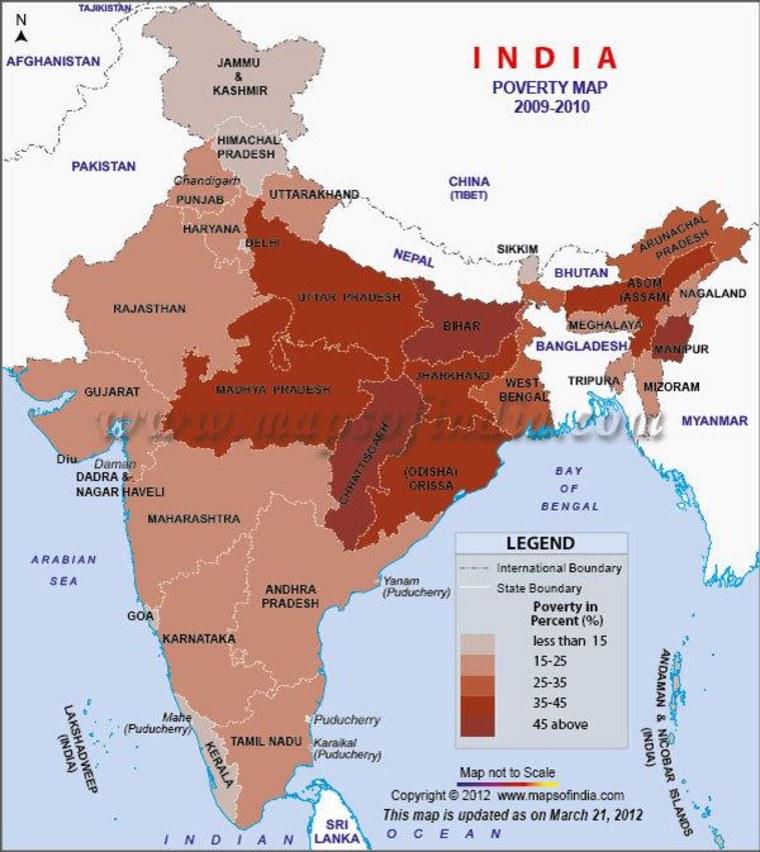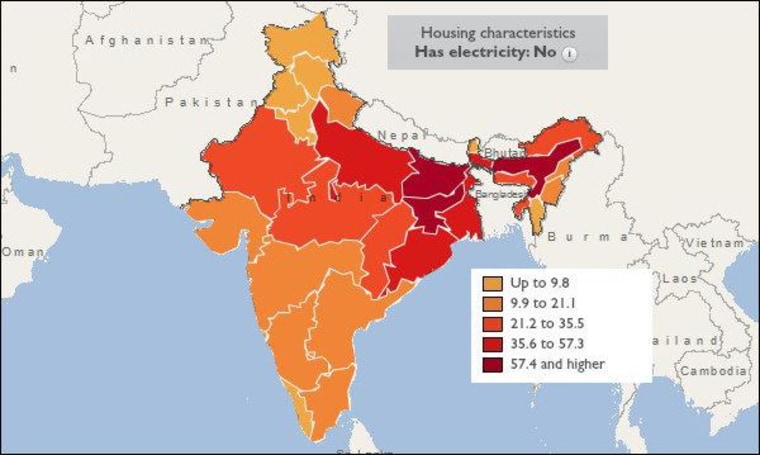UPDATE: Turns out there is a map for that. Thanks to Seth Flaxman for the tip.
I was explaining the India blackout to my young son yesterday when he told me that the people in India live in the jungle because they have elephants. Setting aside that Indian elephants are probably more likely to live on grasslands than jungle, I pointed out to him that 600 million people, two United Stateses, probably mostly live in cities. Then it occured to me that the images I've seen of high density populations in India have also shown pretty extreme poverty. How many of those people even had electricity in the first place? Is that 600 million without power who already had power? Or is that 600 million people inhabiting areas with zero electricity for anyone?
The answer is difficult to ascertain, in part because India is well aware that it doesn't have enough electricity to go around and it makes a ritual of setting goals and targets to deal with the problem. Those goals don't seem to ever be met, but it's also hard to tell if they're making progress.
Here's Bloomberg, September 22, 2010:
"In India, 404 million people don't have access to the energy needed for lighting, mechanical power, transport and telecommunications, according to an IEA report published today. That's equivalent to one in three Indians or roughly the population of the U.S. and Mexico combined, according to data compiled by Bloomberg. .... India's government has pledged to provide electricity nationwide by 2012..."
How's that for irony?
Bloomberg again, this time January 18, 2012, in an article about setbacks in the pursuit of that 2012 goal:
"The United Nations estimates that more than 25 percent of India's 1.2 billion people live without electricity."
That's 300 million right there. What part of that group "lost power" in the blackout?
At the beginning of 2011 this New York Times piece cited the 400 million number, I think from that same September 2010 report, but also added this detail:
"The place that remains most in darkness is Bihar, India's poorest state, which has more than 80 million people, 85 percent of whom live in households with no grid connection. Because Bihar has nowhere near the capacity to meet its current power demands, even those few with connections receive electricity sporadically and often at odd hours, like between 3:00 a.m and 6:00 a.m., when it is of little use."
Wanna guess where the state of Bihar is?
That's right in Tuesday's blackout zone. Does having electricity from 3 a.m. to 6 a.m. count as having electricity, or were those people already effectively in a de facto blackout?
Credit where it's due: the New York Times article I linked to on Tuesday did mention the electricity gap on page 2:
"Part of the problem is access; more than 300 million people in India still have no electricity."
But my brain was too caught up in India's capacity problem to register the availability problem.
No doubt it's still the case that a shocking number of people who usually have electricity are without it as a result of this blackout in India, but it bears remembering that an also shocking number already didn't have any in the first place.
By the way, as far as I know there's no map of access to electricity within India, but to the extent that not having electricity corresponds with poverty, we can go back to the Maps of India site for this 2009-2010 poverty map and see how it overlaps with Tuesday's blackout map:

